
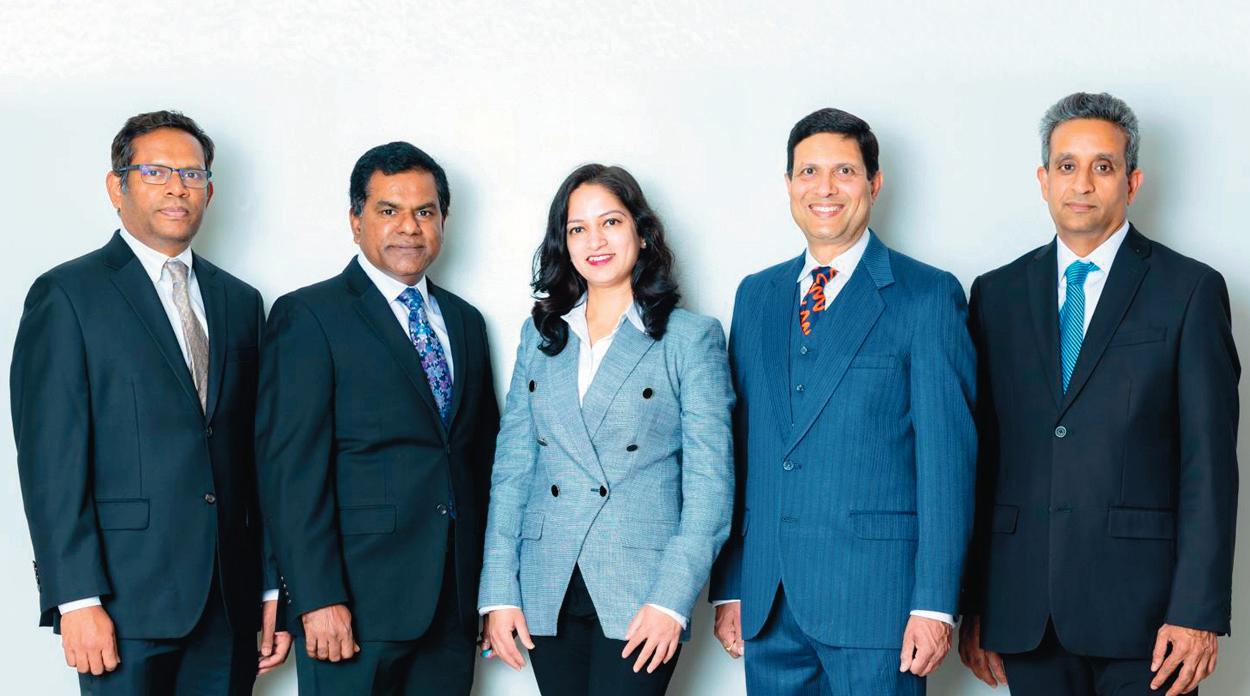



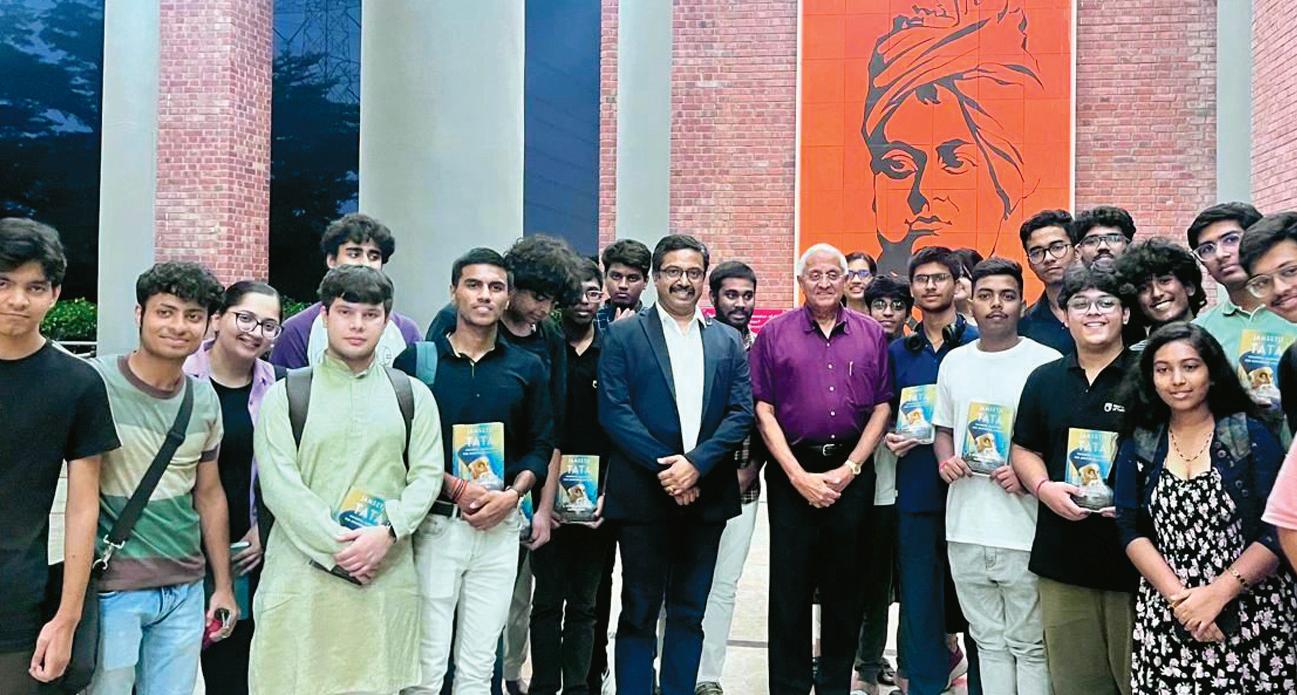













Sugar Land: Sanjay Singhal secured a decisive victory in the Sugar Land City Council District 2 runoff, earning 75.1% of the vote, according to unofficial results released by the City of Sugar Land. He defeated his opponent, Nasir Hussain, by a wide margin - receiving 2,346 votes to Hussain’s 777. This landslide win reflects a strong mandate from voters in one of Sugar Land’s most diverse districts.
Momentum from the Start
Singhal’s victory followed a strong performance in the May 3rd general election, where he led a five-candidate field with 1,681 votes (38%), earning a spot in the runoff. Running as an independent, he relied on grassroots outreach and a proven record of community involvement rather than party affiliation.
Professional Excellence and Global Perspective
Sanjay Singhal is a graduate of the Indian Institute of Technology (IIT) Delhi, where he was awarded the Director’s Gold Medal for being the best all-round student of his class. He enjoyed a 33-year career at global energy services company Schlumberger (SLB), holding executive roles across Asia, Europe, Africa, and the United States.
Singhal and his wife, Ruchi, have called Sugar Land home for over a decade, with their two sons and daughter-in-law also residing in the area.
A Campaign Built on Community and Results
A longtime Sugar Land resident and former president of the Telfair Homeowners Association (HOA), Sanjay Singhal ran on a platform of proven results, transparent governance, fiscal responsibility, and operational efficiency.
“I am deeply honored and grateful to the residents of District 2,” Sanjay said in his post-election statement. “This campaign was about proven leadership, commitment to transparency, and an open dialogue with the residents. Now, I look forward to working collaboratively to help move Sugar Land forward.”
Beyond his professional accomplishments, Singhal has been a dedicated civic leader. He served five years on the Telfair HOA Board, including three years as president. Under his leadership, the HOA grew resident involvement, oversaw the construction of new community facilities and increase in amenities, while reducing HOA dues and growing reserve funds. This was accomplished by driving across-the-board efficiencies and negotiating favorable contracts.


Singhal also emerged as a leading voice against a proposed natural gas power plant near residential neighborhoods, advocating for greater transparency and resident input in city decision-making—values that became central themes of his campaign.
A Message that Resonated
Singhal’s ability to connect across cultures and communities broadened his appeal in the district. His campaign emphasized unity and a transparent, resident-focused city government.
Sanjay’s campaign got support from all communities living in diverse district 2 which includes New Territory, Telfair and River Park areas of Sugar Land. District 2 also saw higher voter turnout compared to the rest of Sugar Land and within the district, Indo-American population voter turnout was highest compared to last many election elections.
“Residents are tired of divisiveness. They want results, they want openness, and they want someone who will speak up for them,” said a campaign volunteer. “That’s what Sanjay offered, and the voters responded.”
Looking Ahead
Following his victory, Singhal expressed optimism about the future. “I look forward to collaborating with the new Mayor and City Council to build an efficient, more inclusive, and resident-focused Sugar Land for everyone,” he said.














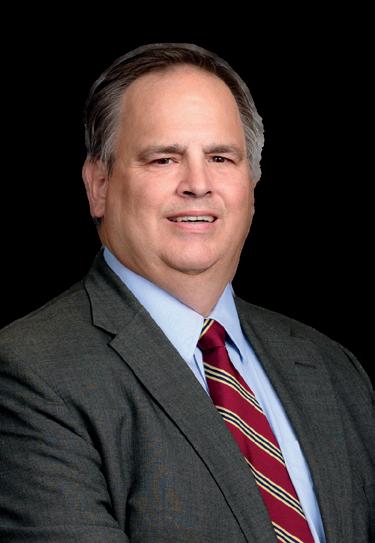












WaShington dC: One of Elon Musk’s austerity operatives discovered that the government had far less glut than he’d banked on — and tellingly, admitting as much publicly got him fired.
Sahil Lavingia, a tech founder and erstwhile software engineer with Musk’s Department of Government Efficiency (DOGE), revealed in a recent blog post that he had “got[ten] the boot” from the agency after telling Fast Company last month that the federal workforce had turned out to be way more efficient than he anticipated.
In that initial interview, the Gumroad founder said he was impressed to find that his coworkers at the Department of Veterans Affairs “love their jobs” and worked hard at them — an honest admission that seems to have cost him his job. Just a day after the FastCo interview was published, Lavigina found that his “access” — to the VA’s computer networks, presumably — had been “revoked without warning.”
“My DOGE days,” the jilted
techie wrote, “were over.”
Lavigina also revealed in the blog post, which detailed his 50-day tenure at the agency, that he didn’t end up getting much done — a slap in the face to the agency’s mandate to save taxpayer dollars and abolish the “tyranny of bureaucracy,” as Musk put it earlier this year.
“I didn’t make any progress on improving the [user experience] of veterans’ filing disability claims or automating/speeding up claims processing, like I had hoped to when I started,” the former DOGE staffer lamented.
“I built several prototypes, but was never able to get approval to ship anything to production that would actually improve American lives — while also saving money for the American taxpayer.”
CoLLege Station: A new cell therapy developed by Dr. Simrit Parmar, an associate professor at Texas A&M University’s College of Medicine, has demonstrated potential in treating amyotrophic lateral sclerosis (ALS), aplastic anemia, and other severe medical conditions. The therapy, created under the clinical-stage biotech company Cellenkos Inc., which Parmar founded in Houston, is currently undergoing human trials and has shown encouraging results.
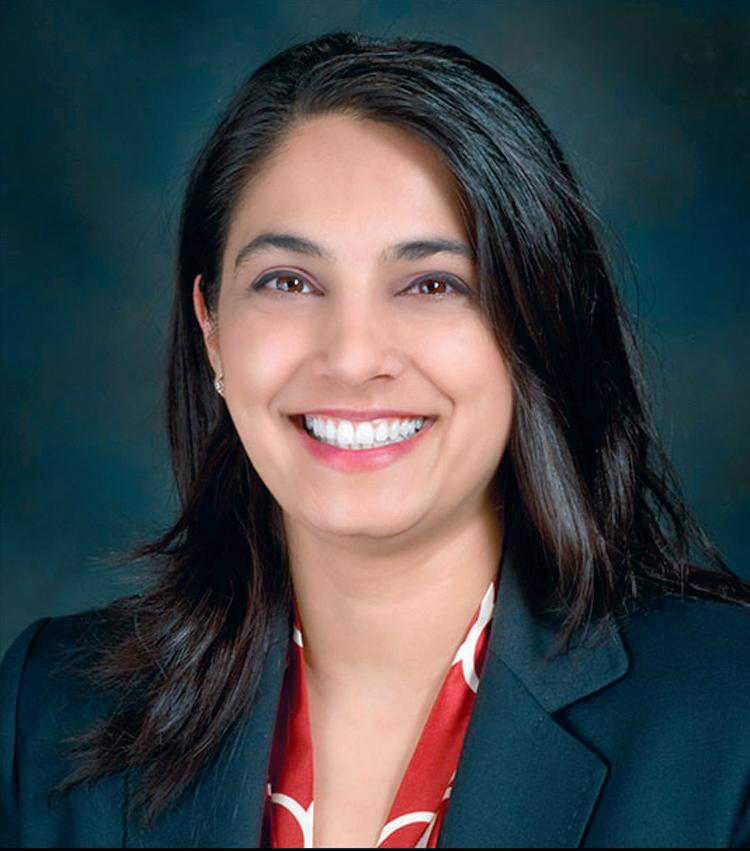
the United States and Saudi Arabia.

He also suggested that DOGE staffers were more like middle managers than actual workers.
“DOGE was more like having McKinsey volunteers embedded in agencies rather than the revolutionary force I’d imagined,” the fired engineer recounted in reference to the McKinsey Corporation, the management consulting firm that allegedly fixed bread prices and formerly employed presidential candidate Pete Buttigieg.
“The public was seeing news reports of mass firings that seemed cruel and heartless, many assuming DOGE was directly responsible,” he continued. “In reality, DOGE had no direct authority. The real decisions came from the agency heads appointed by President Trump, who were wise to let DOGE act as the ‘fall guy’ for unpopular decisions.”
It sounds a lot like DOGE jobs are the ultimate a waste of time and taxpayer money — though thankfully, Lavigina volunteered to work there for free.
The treatment aims to address some of the most challenging diseases by leveraging innovative cellular approaches. ALS, a progressive neurodegenerative disorder that affects nerve cells in the brain and spinal cord, remains without a cure despite ongoing research efforts. Similarly, aplastic anemia—a rare condition where the body stops producing enough blood cells—poses significant health risks to patients. The newly developed therapy represents a novel approach to tackling these illnesses. Further details about the trial outcomes or specific mechanisms of action have not been disclosed at this time.
Recent developments have led to a significant investment and partnership between Cellenkos and a prominent medical center in Riyadh, Saudi Arabia. This collaboration marks a historic first for clinical trial partnerships between
The innovative therapy employs umbilical cord blood-derived T regulatory (Treg) cells to address inflammation, which is a common underlying factor in several challenging health issues. These Treg cells are uniquely designed to mitigate inflammation without causing additional harm to the patient.
Dr. Parmar’s team has successfully treated over 80 patients across various conditions, including ALS, aplastic anemia, and acute respiratory distress syndrome (ARDS). Recent studies published in NEJM Evidence highlighted significant improvements in patient outcomes following the administration of this therapy.

London: Builder.ai, once valued at $1.5 billion and backed by Microsoft and Qatar’s sovereign wealth fund, has filed for bankruptcy after reports that its “AI-powered” app development platform was actually operated by Indian engineers, said to be around 700 of them, pretending to be artificial intelligence (AI).The startup, which raised over $445 million from investors including Microsoft and the Qatar Investment Authority, promised to make software development “as easy as ordering pizza” through its AI assistant “Natasha.” However, as per the reports, the company’s technology was largely smoke and mirrors, human developers in India manually wrote code based on customer requests while the company marketed their work as AI-generated output.Builder.ai’s dramatic collapse came in May 2025 when lender Viola Credit seized $37 million from the company’s accounts after discovering the startup had inflated its 2024 revenue projections by 300%. Founder Sachin Dev Duggal had promised $220 million in sales to creditors, but an independent audit revealed actual revenue of just $50 million.
The deception wasn’t new. As early as 2019, The Wall Street Journal exposed Builder.ai’s questionable AI claims, revealing that the platform relied heavily on human contractors rather than artificial intelligence. Multiple former

employees described the company as “all engineer, no AI,” with most development work performed manually by staff in India.Former employee Robert Holdheim sued the company for $5 million in 2019, alleging he was dismissed after complaining that Builder.ai’s technology “did not work as promoted and was essentially nothing more than ‘smoke and mirrors’.” Court filings claimed the company told investors apps were “80%
built” by AI technology they had “barely even begun to develop.”
The scheme unraveled when new CEO Manpreet Ratia, brought in to replace Duggal in February, discovered the extent of the financial misrepresentations. US prosecutors in New York have since demanded the company’s financial statements and customer lists as part of a federal investigation.Builder.ai’s collapse represents the largest AI startup failure

since ChatGPT’s launch triggered a global investment frenzy. The company now owes $85 million to Amazon and $30 million to Microsoft in cloud computing fees, while approximately 1,000 employees have lost their jobs.The failure highlights growing concerns about “AI washing,” companies rebranding conventional technology services as artificial intelligence to attract investment in the current AI boom.
Further scrutiny by Bloomberg uncovered that Builder.ai engaged in questionable financial practices with VerSe, an Indian social media startup.
Employees revealed that while some clerical tasks were assisted by general software, the bulk of coding and app development was performed manually.
This practice, which went on for eight years, came to light in May 2025, triggering a rapid collapse of the company.
In a LinkedIn statement, Builder. ai announced it would be “entering into insolvency proceedings,” citing historic challenges and past decisions that severely impacted its financial standing.
“Despite the tireless efforts of our current team and exploring every possible option, the business has been unable to recover,” the company said.
The two companies reportedly exchanged inflated invoices to artificially boost sales figures between 2021 and 2024. VerSe has denied the allegations, with cofounder Umang Bedi describing the claims as “baseless and false.”
The fallout from Builder.ai’s exposure has sparked discussions about transparency and accountability in the AI industry, particularly as investors continue to pour funds into language models and automation technologies.


With heavy hearts and deep gratitude for a life well-lived, we announce the passing of our beloved father, Sushil Kumar Marwa, on Saturday, June 7, 2025, at the age of 92. He was blessed to have experienced and fulfilled many roles in his life as a son, brother, husband, father, grandfather and great grandfather and always a good friend to everyone.
Sushil was born on September 24, 1932, in Fazilka, India (now Pakistan). At the young age of 15, he witnessed the upheaval of Partition in 1947, when his family was forced to leave their well-established homes and businesses in Pakistan and start over in India. He joined the Indian Air Force and, while serving, earned the equivalent of a bachelor’s degree in electrical engineering. After taking early retirement from the Air Force, he worked in both the government and private sectors, specializing in electronic equipment diagnostics and repair.
By the age of 51, he had reached the peak of his career, managing an entire electrical component manufacturing plant in Solan, Himachal Pradesh. Yet, in 1983, he made the courageous decision to leave India and migrate with his entire family to Houston, Texas, in
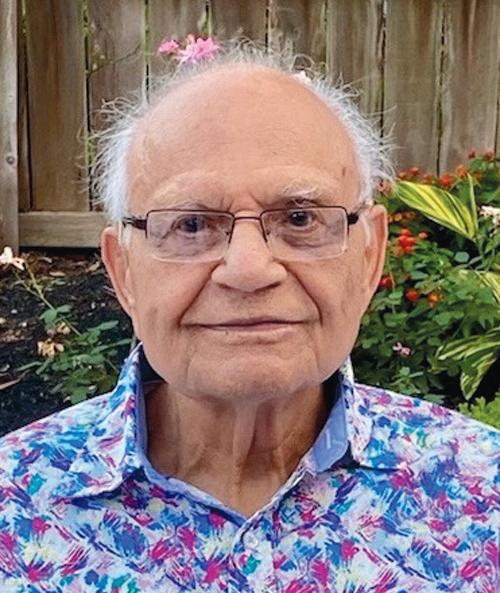
pursuit of better opportunities for his children.
Starting over once again, he built a successful life in the United States, overcoming numerous challenges along the way, retiring from TCI Cable company in 1998. He was a hardworking man, always ready to face life’s difficulties with courage, calmness, and resilience. His ability to remain stoic and cheerful stemmed from his pure heart and the boundless love he shared with everyone around him throughout his life.
Sushil was a man of perpetual optimism, sharp wit, and boundless zest for life. One thing that was common amongst everyone who knew him was that he continuously inspired them with his
optimistic outlook in all situations. His spirit was vibrant and his poetry and humor remained intact till his final days - always ready with a smile to brighten the moment. He was well-known in the community for attending many functions and was actively participated in the events of International Hindi Association where he regaled many programs with his wit and poetry. We were blessed to have had him in our lives, and we hope to honor his memory by following his legacy of selfless living with kindness, strength, and joy. He is survived by Tejinder Marwaha, as well as his children and their spouses: Sangeeta & Arun Pasrija, Sanjiv Marwaha, and Samir & Aparna Marwaha. He also leaves behind his beloved grandchildren: Nikki & Sean Hill, Kunal Pasrija, Vidur Marwaha, Devika Marwaha, Deepa Marwaha, Siddharth Marwaha, and Rishi Marwaha; and his cherished great-grandchildren, Bodhi and Anoushka Hill.
A funeral service to honor his life was held on Wednesday, June 11, 2025 at 9am at WinfordSouthwest Funeral Home. All who knew and loved him attended and celebrated the remarkable man he was.
Ram Bhaskar Patil a long time resident of Houston passed away peacefully in Pune, Maharashtra. Born as the eldest son in a modest Suryavanshi Kshatriya family in Vadhavan village near Dahanu, Maharashtra. He moved to Mumbai prior to Indian Independence. He was deeply influenced by the works of KM Munshi of Bharatiya Vidya Bhavan and remained to be his inspiration right till the end. With a strong Sangh background and being academically gifted he completed his Inter college from Wilson College and subsequently his Civil Engineering from VJTI. He worked in various quasi government and construction companies including BEST, Nahar & Seth and Maker Builders. He was married to Kumudini Patil (Kore) and had a long 64 year matrimony. In the early 70s he took assignments as Chief Engineer in various projects in the Middle East while

working with Mid Mac. The Oil Boom of 80s and the infrastructure projects in Riyadh, Sharjah, Dubai and Iraq gave him a lot of exposure and versatile experience. He immigrated to the United
States in late 80s and thereafter led a life immersed with the family and guiding them in Houston. He had a deep interest in technology and right till his end kept abreast with Ipad & Apple apps. He was a strong willed person and a fighter till the end. Inspite of major illness in 2018 and again in 2020 he bounced back and continued his twilight years around the family narrating stories and staying current with global affair’s. He is grieved by his daughters Sujata Patil, Sandhya Nishit Shah, Leena Kiran Baviskar, Kirti Sanjay Sohoni and Pallavi Swapan Dhairyawan.
He would be dearly missed by his grand kids Rishi Sohoni, Madhavi Chopra, Rutuja Parakh, Yashraj Baviskar, Aditya Shah and Eesha Dhairyawan ; and great grand kids Niall, Mivaan and Dia. He passed away on the auspicious Ekadashi day and the funeral was held at Vaikunth Bhoomi in Pune.



Srinagar: Prime Minister Narendra Modi on Friday (June 6, 2025) inaugurated the world’s highest railway bridge over the Chenab river, which was completed at a cost of Rs.1,486 crore in more than eight years. The Prime Minister walked to the viewpoint and was briefed about the engineering marvel, situated at a height of 359 metres above the river, 35 metres higher than the iconic Eiffel Tower in Paris.
The Prime Minister was also seen interacting with the engineers and workers at the museum, which is part of the world’s highest steel arch rail bridge over Chenab in Reasi district.
The Prime Minister then walked on the bridge holding the tricolour.
After the Chenab bridge, Mr. Modi inaugurated India’s first cable-stayed rail bridge over the river Anji.
Prime Minister Narendra Modi on Friday (June 6, 2025) inaugurated the world’s highest railway bridge over the Chenab river, which was completed at a cost of Rs. 1,486 crore in more than eight years.

Railway Minister Ashwini Vaishnaw, Jammu and Kashmir Lieutenant Governor Manoj Sinha, and Chief Minister Omar Abdullah were present on the occasion.
The architectural marvel Chenab rail bridge, situated at a height of 359 metres above the river and 35 metres higher than the iconic Eiffel Tower in Paris, is a 1,315metre-long steel arch bridge engineered to withstand seismic and wind conditions.
The bridge forms a crucial link in the 111-km stretch from Katra to Banihal, and its construction was approved in 2002, but the work started only in 2017. Before
the construction, 26 km of approach roads and a 400-metre-long tunnel were built to reach the site, railway officials said.
The cable crane was commissioned on August 31, 2013, for the erection of a steel arch, trestle and piers. In 2017, an incremental launch over a 2.74-degree circular and a transition curve of 268 metres length was successfully done for the first time in the Indian Railways.
Joining of the 467-metre-long
arch span was the most critical activity, the officials said, adding precision was to be maintained so that both ends of the arch meet with no error to ensure a perfect fit of the last segment of the arch.
The arch closure ceremony was conducted in April 2021, while the other major milestone was the ‘Golden Joint’ of the deck. The 785-metre-long deck superstructure was launched from both Kauri and Bakkal ends and was finally joined over the arch.
The Golden Joint ceremony was conducted on August 13, 2022.
The Anji bridge is the secondhighest railway bridge after the iconic arch bridge over the Chenab at nearby Kauri.
In October 2016, the railway decided to build a cable-stayed bridge at Anji Khad after the plan to build an arch bridge similar to the Chenab bridge was abandoned due to the vulnerability of the structure, primarily due to concerns over the geological stability of the region.
This asymmetrical cable-stayed bridge crosses the deep gorges of the Anji river, a tributary of the Chenab river, and is located in the young fold mountains of the Himalayas, having extremely complex, fragile and daunting geological features in the form of faults, folds and thrusts and besides seismic proneness of the region.
According to railway officials, the total length of the bridge is 725 metres. It consists of an ancillary viaduct, an approach bridge and a central embankment.
It has been design ed to handle heavy storms, strong winds and even explosions. The total deck width of the bridge is 15 metres.
The Anji bridge has a support of 96 cables varying from 82 metres to 295 metres, officials said.
-- The Hindu






By Juhi Varma
houSton: What does a developed India really look like? Not a copy of America or South Korea, but a homegrown model rooted in India’s own identity?
That’s the question that drove the founders of Rishihood University. Their aim? To cultivate future leaders through a learning model that is “multidisciplinary, multidimensional, and multimodal.”
Rishihood University, in Sonipat, Haryana, opened its doors in 2021 and currently houses over 900 students.
Approaching a major milestone—the graduation of its first class—Rishihood’s founders stopped in Houston during their U.S. tour to share their story—and to seek support for their growing mission.
“It’s India’s moment in time— the largest nation and fastest growing economy in the world,” said Dr. Shobhit Mathur, the university’s 41-year-old vice chancellor. “But all this is underpinned by good education.”
Programs, tuition, admissions, and faculty at Rishihood University
The undergraduate programs offered at Rishihood are BBA, B.Design, B.Sc Psychology and B.Tech.
The student body comprises approximately 60% male and 40% female students.
“We have about 900 students on campus as of now, which will go up to 1600 students in about three months’ time,” Mathur said.
Admissions are merit-based. Academic performance is one aspect of Rishihood’s admissions criteria—the university also values a student’s intent and vision, Mathur said. What are the students’ goals after earning their degree? Are they motivated by a commitment to nation-building, or is their primary aim to secure a high-paying job?
“There’s a Rishihood Foundation course which has courses like ‘Self and Society’, ‘Principle of Design’, ‘Systems Thinking’, ‘Tech and Policy’, ‘Global Grand Challenges’ laying a strong foundation for future leaders,” said Sahil Aggarwal, Rishihood’s cofounder and CEO. “We strongly believe that without understanding your swabhav and your swadharm, your education is not rooted.”
Students pay around Rs. 4.5 lakhs per year in fees. Scholarships are available for students who qualify but cannot afford the tuition.
Around 70 educators make up Rishihood University’s full-time teaching faculty, supplemented by visiting professors who come and go throughout the year.
“We are heavily industry integrated,” Mathur said. “About 40% of our faculty come from the industry, and the curriculum is building partnerships with the industry. One
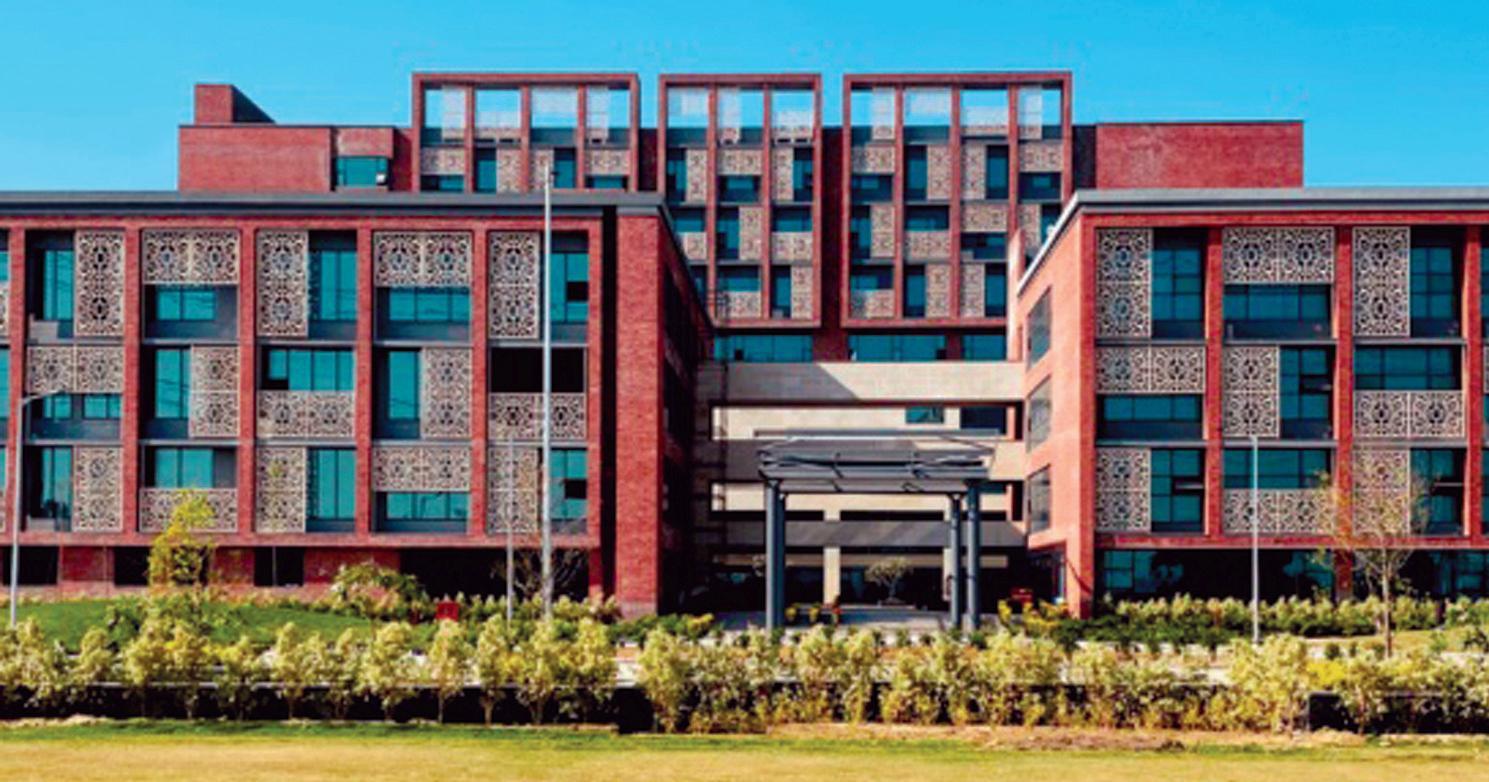
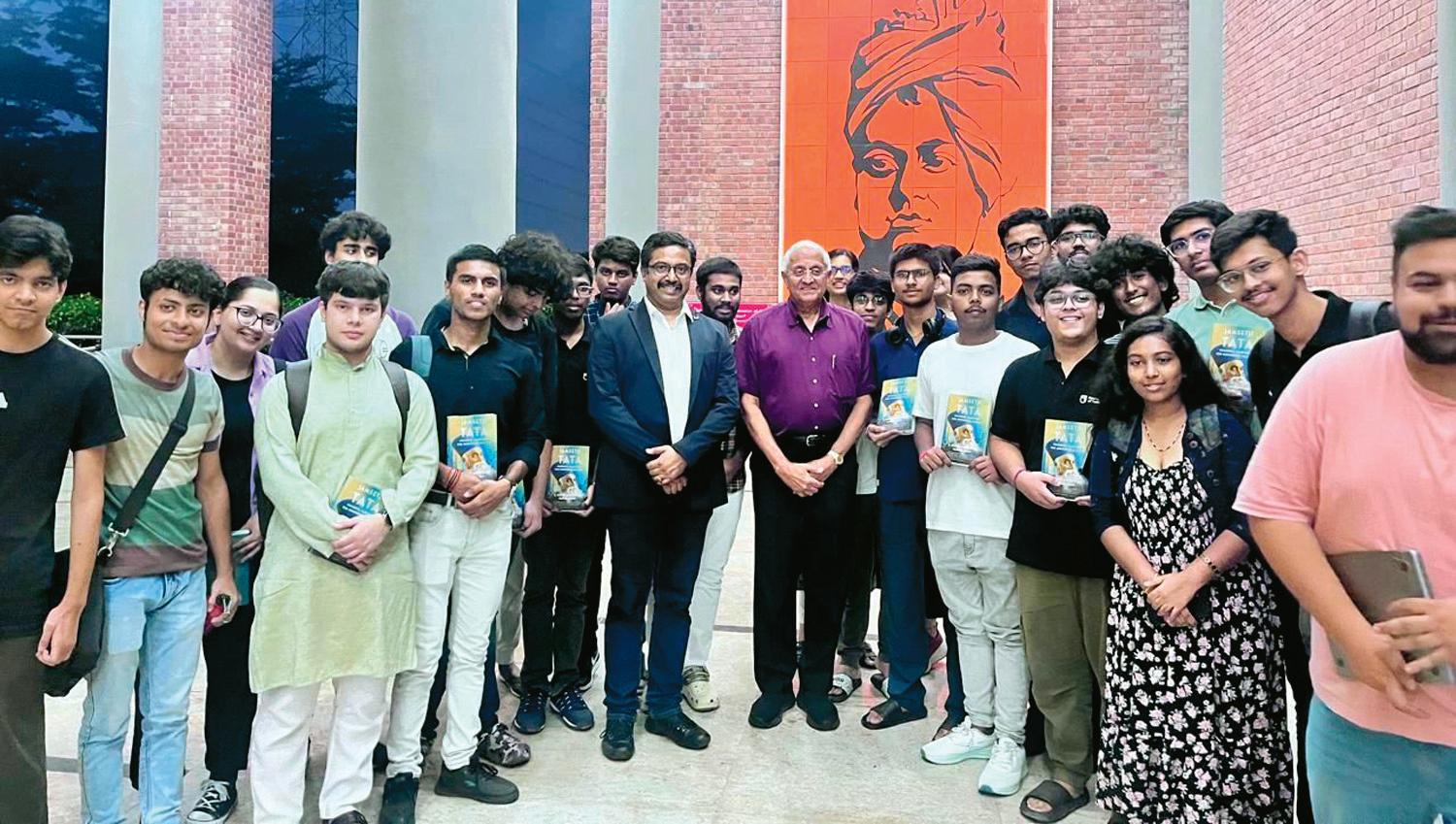

year out of the four years, students go and work in the industry--that’s 25% of your time.”
The average age of the Rishihood team is only 33 years, Mathur said.
Rishihood University is actively seeking young professionals who can grow with the institution and remain connected to it, he said.
“When we said we needed support, we didn’t just mean donations,” Mathur explained. “We meant committed individuals.”
History of Rishihood
The idea for Rishihood took root when Shobhit Mathur(an alumnus of IIT Bombay) met Sa-
hil Aggarwal (a student at IIT Delhi). What began as casual conversations eventually grew into a concrete vision—and ultimately, a reality.
Mathur, like many IIT alumni, moved to the U.S. soon after graduation and joined Amazon in Seattle in 2006. Still, the dream of building a visionary university remained firmly in his mind.
An early supporter was Houston-based businessman and philanthropist Ramesh Bhutada, who contributed ₹1 crore for Rishihood University.
“When Shobhit first told me
toring, Mathur said. Since Rishihood has no alumni base, many young professionals in the U.S. have stepped in to guide students as mentors.
Rishihood’s soon-to-be graduates are charting impressive paths: one is a sarpanch in Palghar, another joined India’s highly selective Ministry of Finance, and a third is building an electric SUV. Mathur credits their success to Rishihood’s unique, purpose-driven approach, which prepares students to contribute meaningfully to the nation.
Can we rebuild Takshahila?
Swami Vivekananda spoke of “Rishihood” as the highest potential a human can reach, and called for the rise of 100 such people who could transform the nation. Rishihood University is a response to that call, Mathur said.
“We’ve taken inspiration from Swami Vivekananda’s words and decided to build an institution that produces such leaders year on year, so they can go ahead and build India,” Mathur said.
Addressing a roomful of Houston-based Indians, Mathur said-
“Many of us have gone through the Indian education system, and have felt we did not get a good deal. There are a lot of challenges in Indian education.”
As young twenty-somethings, many Indians arrive in the U.S. and are struck by the strength of its institutions, Mathur said. Yet few stop to ask why similar institutions aren’t there in India.
“We are so successful here, but what’s the challenge in India?” he said. “Why can’t we build such institutions in India? So that is the thought process that inspired our 10-year journey.”
Ancient India was once home to renowned centers of learning, such as Takshashila, which attracted scholars from around the world.
“We asked ourselves—can we rebuild Takshashila?” said Mathur and Aggarwal.
about it (back in 2013), and I remember thinking ‘this young man wants to set up a university.’” Bhutada said.
“I mean setting up a university, and that too in Bharat, and that too on a concept of providing a Dharmic foundation to your studies. But I believed in him as an individual. So I said, ‘well, for whatever you want to do, whatever little I can do, I will try to help you’.”
Rishi Bhutada, son of Ramesh Bhutada, joined the university’s board of founders in April and significantly expanded the family’s philanthropic support.
In addition to financial support, many individuals contribute by men-
During their latest visit to the US, Rishihood University hosted a two-day public policy conference in Washington, D.C., convening thought leaders and building momentum to scale policy research and training programs in India and the U.S. They have ongoing collaborations with U.S. scholars and think tanks, laying the foundation for transnational public policy initiatives.
Visiting nine cities, the university’s team connected with existing board members, potential donors, visiting faculty, alumni, and policy makers.
The university’s leadership team engaged with professors from MIT, Northeastern University, Georgia Tech, Duke University etc. to discuss joint academic initiatives
To learn more about Rishihood University please visit: rishihood. edu.in

By renuka VyaVahare
Story: The death of an ageing billionaire (Ranjeet) on his luxury cruise brings chaos to the lives of those aboard the ship. His will names his son ‘Jolly’, as an heir to his property. Chaos turns into frenzy when three Jollys (Akshay Kumar, Abhishek Bachchan, Riteish Deshmukh) show up to claim the wealth. If the plot wasn’t crowded enough, there’s a masked killer on the loose and everyone’s a suspect. Who’s the killer and who’s the real Jolly?
Review: Housefull franchise‘s existence is rooted in slapstick comedy, so you walk in knowing what to expect. Akshay Kumar slapping CGI monkeys, girls blatantly objectified and Riteish Deshmukh gobbling a parrot as annoying as the one in ‘Main Prem Ki Diwani Hoon’, don’t surprise you. You snigger at lines like ‘Thokte raho……. Taaliya’, ‘mera popat kabhi nahi uthega’, but overlook the cringe because that’s what the brand is all about. What surprises you is the utter lack of humour, even dirty humour if we may say so in the script and sheer
wastage of a zillion actors who are known for their comic timing.
Directed by Tarun Mansukhani, a far cry from his brand of humour in Dostana, Housefull 5 deserved a script, let alone better writing. In a span of 2 hours, 45 minutes (a bit too long for a whodunnitcomedy), the banal first half is loaded with random songs, pointless arguments, juvenile jibes and loud noise… everything but humour. You desperately miss comic punches. Even Sanjay Dutt and Jackie Shroff’s inclusion as baba and bhidu don’t add up. You feel sorry for these actors reducing themselves to caricatures of their former glory.
The film somewhat takes off in the second half but truly sheds its stagnancy only in the climax, a bit too late. This also marks the arrival of Nana Patekar. The senior actor, a master of the genre (control Uday… control of Welcome) shows how it’s done. As a dhoti clad interpol chief based in London, rooted in Maharashtra, Patekar is terrific and infuses life into this overloaded, derailed cruise. Sajid Nadiadwala tries to blend comedy with murder mys-
tery through his script and fails at both barring the climax. It’s the last 20 minutes along with Nana’s entry that truly entertain you. This is what you expected Housefull 5 to be… thrilling, unpredictable and funny. Sajid even manages to conceal the identity of the killer till the end, but the humour aspect falls miserably flat.
Barring Riteish who manages to entertain, both Abhishek Bachchan and Akshay Kumar get little to play with as far as words are concerned. The women have nothing much to do except for upping the glam quotient and being the butt of several adult jokes. Sonam Bajwa, Fardeen Khan and Dino Morea act sensibly. Shreyas Talpade, Johnny Lever and Chunky Panday are criminally wasted. Talpade just disappears for a major part of the film, but we can’t expect logic here. Can we?
Note: The film has two climaxes 5A and 5B, both versions have different killers, while rest stays the same. Won’t make much of a difference which version you choose but if you must, go for 5A.-- ToI


Place a number in the empty boxes in such a way that each row across, each column down and each 9-box square contains all of the numbers from one to nine.
Send us the correct answer before June 17, 2025. Email us at indoamericannews@yahoo.com. Please send us your solved Sudoku for your name to be published.


Kumud Athavale, Krishna R. Vuddagiri, Sanchali Basu, Prabha Barvalia, Ramana Vadrevu, Yudhveer Bagga, Jawahar Khandheria, Arup Gupta, Mohit Mittal, Naveen Garg, Taranjit Singh, Pravina Kadakia, Tia Arora, Ramesh Ratneshvar

